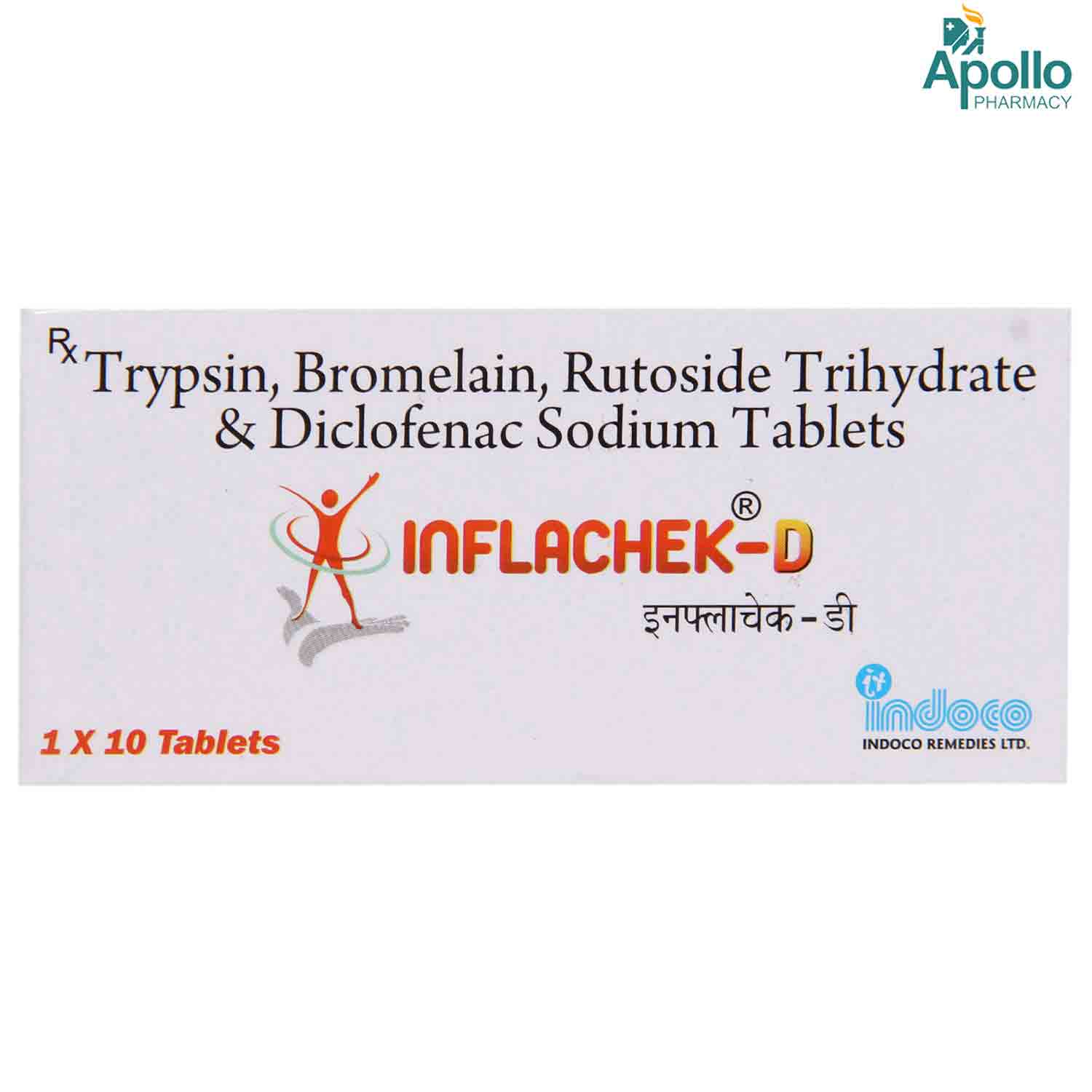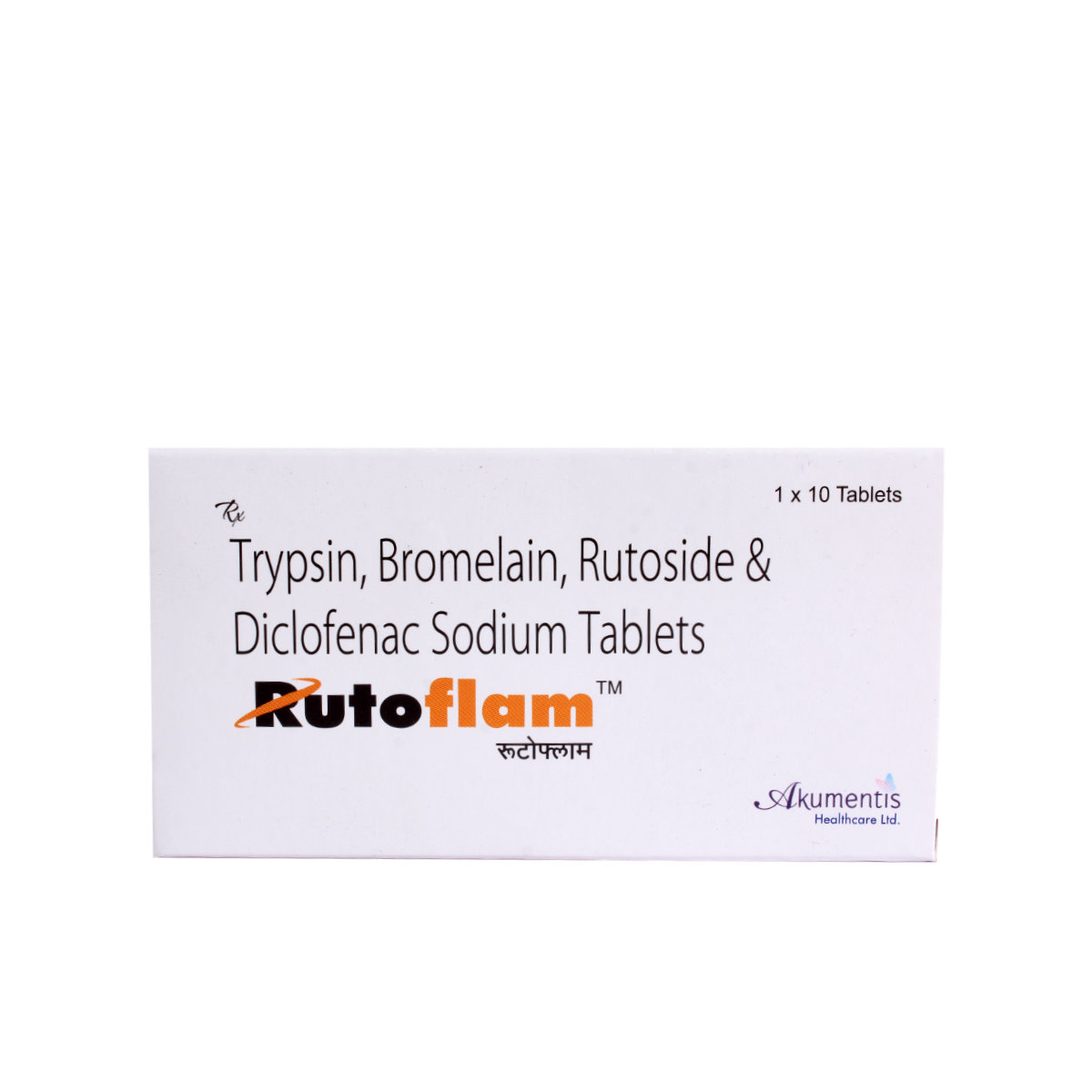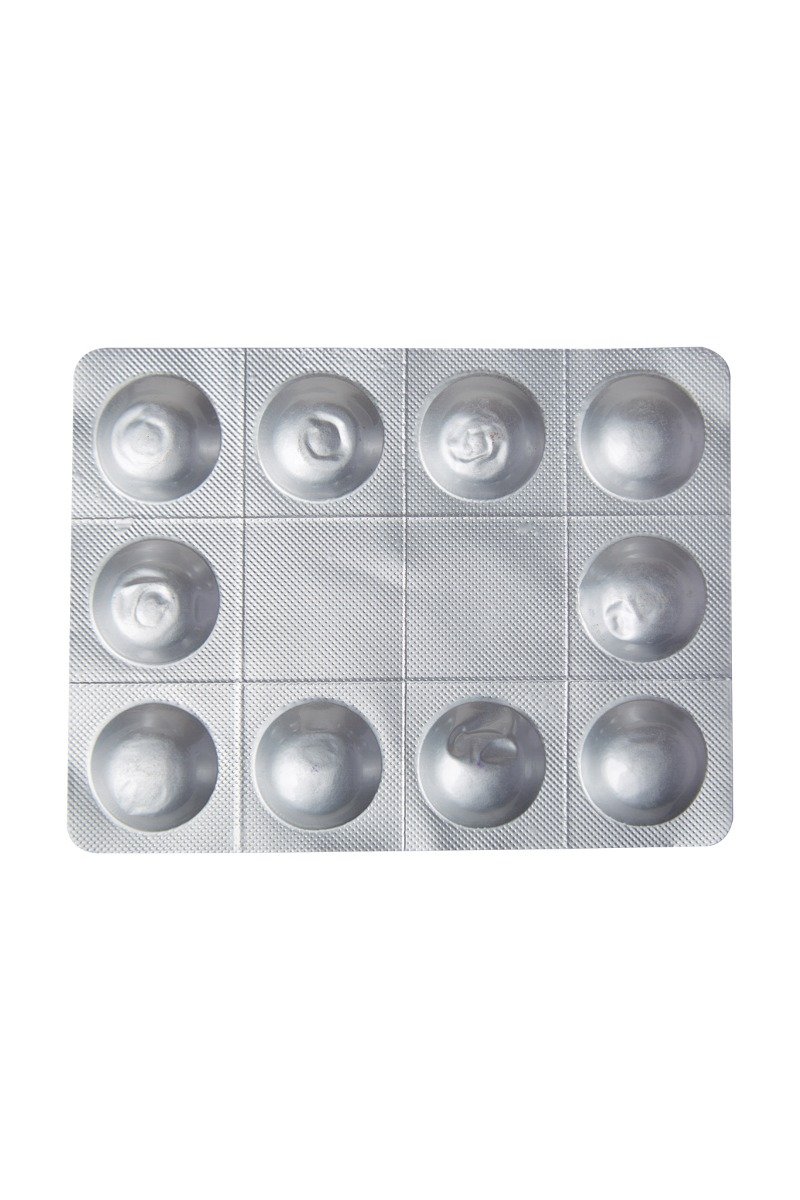Rutomax-D Tablet

MRP ₹210
(Inclusive of all Taxes)
₹31.5 Cashback (15%)
know your delivery time
Provide Delivery Location
Manufacturer/Marketer :
Consume Type :
Expires on or after :
Return Policy :

Secure Payment

Trusted by 8 Crore Indians

Genuine Products
Therapeutic Class
Country of origin
Manufacturer/Marketer address
Disclaimer
Alcohol
Safe if prescribed
Alcohol may cause further liver damage and worsen side effects of Rutomax-D Tablet . So, limit the consumption of alcohol while using Rutomax-D Tablet .
Pregnancy
Consult your doctor
Rutomax-D Tablet may cause harmful effects on your foetus. Your doctor may prescribe this medicine if the benefits outweigh the risks.
Breast Feeding
Consult your doctor
It is unknown whether Rutomax-D Tablet can be used in breastfeeding as there is no sufficient data on its safety. Hence, consult your doctor before taking this medicine if you are breastfeeding.
Driving
Safe if prescribed
Rutomax-D Tablet may cause headaches and dizziness. So, you should not drive or operate heavy machinery if you feel dizzy after taking Rutomax-D Tablet .
Liver
Consult your doctor
Rutomax-D Tablet may alter liver function. So, it should be used with caution if you have liver problems. Your doctor may adjust the dose or prescribe a suitable alternative if necessary based on your condition.
Kidney
Consult your doctor
Rutomax-D Tablet should be used with caution if you have kidney disease. Your doctor may adjust the dose or prescribe a suitable alternative if necessary based on your condition.
Children
Safe if prescribed
Rutomax-D Tablet is not recommended for children below 12 years of age.
Product Substitutes
About Rutomax-D Tablet
Rutomax-D Tablet belongs to the class of medications called ‘analgesics’ used to treat pain associated with various conditions. It is used in the treatment of pain, swelling, and inflammation associated with chronic (long-term) conditions such as osteoarthritis (joint pain, especially in the knees, hip, hands, neck, and lower back) and rheumatoid arthritis (joint pain, especially in the hands and feet). It can also relieve acute (short-term) pain such as toothache, ear pain, throat pain, muscle ache, and backache.
Rutomax-D Tablet is a combination medicine that contains Trypsin, Bromelains, Rutoside, and Diclofenac. Trypsin and Bromelain are enzymes and have antiseptic and anti-inflammatory properties. They reduce pain, swelling, and inflammation by increasing the blood supply to the affected area. It can also promote healing. Rutoside is an antioxidant and anti-inflammatory agent. It prevents further swelling and inflammation by neutralizing the chemicals (free radicals) that cause cell damage. Diclofenac is a non-steroidal anti-inflammatory agent (NSAID) that prevents the production of chemical substances (prostaglandins) that cause pain and inflammation.
Rutomax-D Tablet is available in the form of a tablet. You should take this medication exactly as prescribed by your doctor. Rutomax-D Tablet may cause side effects such as nausea, vomiting, stomach pain, indigestion, heartburn, stomach upset, diarrhoea, headache, flushing (skin reddening), and skin rash. These side effects are usually mild and temporary. However, if any of these side effects persist or worsen, consult a doctor immediately.
Do not take Rutomax-D Tablet if you are allergic to NSAIDs or any other contents of it. Rutomax-D Tablet should not be used in patients with a history of stomach ulcers, active stomach ulcers or bleeding, or stomach problems due to NSAIDs, heart, liver, kidney disease, and poor blood circulation. Rutomax-D Tablet should be used with caution in patients with ulcerative colitis (inflammation of the large intestine), other bowel disorders, porphyria (an inherited blood disorder), bleeding disorders, asthma, other respiratory infections, hypertension (high blood pressure), history of blood clots, high cholesterol, diabetes, history of smoking, and systemic lupus erythematosus (a skin disease). Rutomax-D Tablet should also be used with caution in pregnant and breastfeeding women. Rutomax-D Tablet is not recommended for children below 12 years of age. Rutomax-D Tablet may require dose adjustments when used in elderly people. Alcohol may increase the risk of liver damage and side effects, such as nausea, vomiting, and diarrhoea. Rutomax-D Tablet may cause dizziness, so do not drive or operate heavy machinery if you are dizzy.
Uses of Rutomax-D Tablet
Medicinal Benefits Mweb
Key Benefits
Rutomax-D Tablet contains Trypsin, Bromelains, Rutoside, and Diclofenac. Trypsin and Bromelain are enzymes and have antiseptic and anti-inflammatory properties. They reduce pain, swelling, and inflammation by increasing the blood supply to the affected area. It can also promote healing. Rutoside is an antioxidant and anti-inflammatory agent. It prevents further swelling and inflammation by neutralizing the chemicals (free radicals) that cause cell damage. Diclofenac is a non-steroidal anti-inflammatory agent (NSAID) that prevents the production of chemical substances (prostaglandins) that cause pain and inflammation. Rutomax-D Tablet can be used to treat osteoarthritis, rheumatoid arthritis, toothache, ear pain, throat pain, and muscle pain. It can provide quick relief from the pain and promote faster healing of the affected tissue. It helps you to do your daily activities by decreasing the interference of pain and improving quality-of-life.
Directions for Use
Side Effects of Rutomax-D Tablet
- Nausea
- Vomiting
- Stomach pain
- Indigestion
- Heartburn
- Stomach upset
- Diarrhoea
- Headache
- Flushing (skin reddening)
- Skin rash
Drug Warnings
Rutomax-D Tablet should be used with caution in patients with heart diseases as it may increase heart rate. Rutomax-D Tablet may cause liver damage, so regular monitoring of liver function is required if this medicine is taken for longer durations. If you are scheduled for surgery of the stomach or intestine, inform your doctor that you are taking Rutomax-D Tablet as this medicine may delay wound healing. Do not overdose on medicine, as Rutomax-D Tablet in higher doses may increase heart attack or stroke risk.
Drug-Drug Interactions
Drug-Drug Interactions
Login/Sign Up
Co-administration of Rutomax-D Tablet with Meloxicam can increase the risk or severity of gastrointestinal side effects.
How to manage the interaction:
Taking Meloxicam with Rutomax-D Tablet is not recommended as it can possibly result in an interaction, it can be taken if your doctor has advised it. However, consult your doctor immediately if you experience symptoms such as dizziness, lightheadedness, red or black, tarry stools, coughing up or vomiting fresh or dried blood that looks like coffee grounds, severe headache, and weakness. Do not stop any medication without doctor's advise.
Taking Rutomax-D Tablet with Enoxaparin can increase the risk of bleeding complications.
How to manage the interaction:
There may be a possible interaction between Rutomax-D Tablet and Enoxaparin, but they can be taken together if your doctor has prescribed them. However, consult your doctor immediately if you experience any unusual bleeding or bruising, swelling, vomiting, blood in your urine or stools, headache, dizziness, or weakness. Do not discontinue any medications without consulting a doctor.
Coadministration of Rutomax-D Tablet with Ketoconazole may increase the risk of liver problems.
How to manage the interaction:
There may be a possible interaction between Rutomax-D Tablet and Ketoconazole, but they can be taken together if a doctor has prescribed them. However, consult a doctor immediately if you have fever, chills, joint pain or swelling, unusual bleeding or bruising, skin rash, itching, loss of appetite, fatigue, nausea, vomiting, abdominal pain, dark colored urine, light colored stools, and/or yellowing of the skin or eyes. Do not discontinue any medications without consulting a doctor.
Taking Rutomax-D Tablet with human immunoglobulin may increase the risk of kidney problems.
How to manage the interaction:
Although there is an interaction between Human immunoglobulin and Rutomax-D Tablet, you can take these medicines together if prescribed by a doctor. However, consult the doctor immediately if you experience symptoms such as nausea, vomiting, loss of appetite, increased or decreased urination, sudden weight gain or weight loss, fluid retention, swelling, shortness of breath, muscle cramps, tiredness, weakness, dizziness, confusion, and irregular heart rhythm. Do not discontinue any medications without consulting a doctor.
Taking Rutomax-D Tablet with Ibrutinib can increase the risk of bleeding tendencies.
How to manage the interaction:
There may be a possible interaction between Rutomax-D Tablet and Ibrutinib, but they can be taken together if a doctor has prescribed them. However, consult a doctor immediately if you experience any unusual bleeding, dizziness, lightheadedness, red or black, tarry stools, coughing up or vomiting fresh or dried blood that looks like coffee grounds, or severe headaches. Do not discontinue any medications without consulting a doctor.
Co-administration of Rutomax-D Tablet with Celecoxib may increase the risk of stomach bleeding and ulcers.
How to manage the interaction:
Although there is a interaction between Rutomax-D Tablet and Celecoxib, but it can be taken if your doctor has advised it. Consult a doctor if you experience symptoms like blood in your urine or stool (or a black stool), severe bruising, prolonged nosebleeds, feeling dizzy or lightheaded, weakness or severe headache, vomiting blood or coughing up blood, heavy menstrual bleeding (in women), difficulty breathing, or chest pain. Do not discontinue any medication without consulting a doctor.
Co administration of Rutomax-D Tablet with Leflunomide may result in liver problems.
How to manage the interaction:
Co-administration of Rutomax-D Tablet and Leflunomide can lead to an interaction; it can be taken if advised by your doctor. However, if you have a fever, chills, joint pain or swelling, unusual bleeding or bruising, skin rash, itching, loss of appetite, fatigue, nausea, vomiting, abdominal pain, dark-colored urine, light-colored stools, or yellowing of the skin or eyes. Do not stop using any medication without consulting your doctor.
Concomitant administration of Rutomax-D Tablet and furosemide may decrease the therapeutic efficacy of furosemide and adversely affect renal function.
How to manage the interaction:
There may be a possible interaction between Rutomax-D Tablet and furosemide, but they can be taken together if your doctor has prescribed them. However, consult your doctor immediately if you experience symptoms like nausea, dizziness, irregular heartbeats, altered blood pressure, tingling. Do not stop using any medications without first talking to your doctor.
Co-administration of Rutomax-D Tablet and tenofovir alafenamide may cause kidney problems.
How to manage the interaction:
There may be a possible interaction between Rutomax-D Tablet and Tenofovir alafenamide but they can be taken together if your doctor has prescribed them. However, consult your doctor immediately if you experience symptoms such as such as nausea, vomiting, loss of appetite, increased or decreased urination, sudden weight gain or weight loss, fluid retention, swelling, shortness of breath, bone pain, muscle cramps, tiredness, weakness, dizziness, confusion, and irregular heart rhythm. Do not stop using any medications without talking to your doctor.
Taking Dasatinib together with Rutomax-D Tablet may increase the risk of bleeding.
How to manage the interaction:
There may be a possible interaction between Rutomax-D Tablet and Dasatinib but they can be taken together if a doctor has prescribed them. However, consult a doctor immediately if you experience dizziness, red or black, tarry stools, or severe headaches. Do not discontinue any medications without consulting a doctor.
Drug-Food Interactions
Drug-Food Interactions
Login/Sign Up
Drug-Diseases Interactions
Drug-Diseases Interactions
Login/Sign Up
Drug-Drug Interactions Checker List
- ASPIRIN
- IBUPROFEN
- AMOXICILLIN
- WARFARIN
- LITHIUM
- METHOTREXATE
- CICLOSPORIN
- TACROLIMUS
- TRIMETHOPRIM
- MIFEPRISTONE
- DIGOXIN
- PHENYTOIN
- VORICONAZOLE
- COLESTIPOL
- CHOLESTYRAMINE
Habit Forming
Special Advise
Rutomax-D Tablet may increase the heart rate. Inform your doctor about any such symptoms.
Long-term use of Rutomax-D Tablet may cause liver damage, your doctor may advise liver function for regular monitoring of liver function.
Diet & Lifestyle Advise
- Do not go for heavy exercise as it may increase your joint pain in arthritis. Instead, you can do stretching, low impact aerobic exercises like walking on the treadmill, bike riding, and swimming. You can also strengthen your muscles by lifting light weights.
- In the chronic conditions of arthritis or joint pain, try to include fish like salmon, trout, tuna, and sardines. These fishes are enriched with omega-3 fatty acids that minimize levels of chemicals called cytokines, which ramp up inflammation.
- Your sitting posture is important, especially when you have pain and inflammation. Try to sit as little as possible, and only for a short duration of time. Long-term immobility is harmful in conditions like arthritis. Use back support like a rolled-up towel at the back of your spine curve to minimize pain. Keep your knees and hips at a right angle. Besides this, you can also use a footrest if required.
All Substitutes & Brand Comparisons
RX
ENZOFLAM SV TABLET
Alkem Laboratories Ltd
₹124.5
(₹11.21 per unit)
40% CHEAPERRX
Out of StockTRYBOSIDE D TABLET
Solace Pharmaceuticals
₹150
(₹13.5 per unit)
28% CHEAPERRX
Out of StockReeborn-D Tablet 10'S
Johnlee Pharmaceuticals Pvt Ltd
₹154.7
(₹13.92 per unit)
26% CHEAPER
Buy best C.n.s Drugs products by
Intas Pharmaceuticals Ltd
Sun Pharmaceutical Industries Ltd
Torrent Pharmaceuticals Ltd
Alkem Laboratories Ltd
Abbott India Ltd
Cipla Ltd
Alteus Biogenics Pvt Ltd
Micro Labs Ltd
Lupin Ltd
Ipca Laboratories Ltd
D D Pharmaceuticals Pvt Ltd
Icon Life Sciences
Mankind Pharma Pvt Ltd
Tripada Healthcare Pvt Ltd
Arinna Lifesciences Ltd
Linux Laboratories Pvt Ltd
East West Pharma India Pvt Ltd
La Renon Healthcare Pvt Ltd
Talent India Pvt Ltd
Tas Med India Pvt Ltd
Zydus Healthcare Ltd
Cnx Health Care Pvt Ltd
Eris Life Sciences Ltd
Leeford Healthcare Ltd
Emcure Pharmaceuticals Ltd
Macleods Pharmaceuticals Ltd
Sigmund Promedica
Aristo Pharmaceuticals Pvt Ltd
Dr Reddy's Laboratories Ltd
Troikaa Pharmaceuticals Ltd
Consern Pharma Ltd
Zydus Cadila
Shine Pharmaceuticals Ltd
Wockhardt Ltd
Ardent Life Sciences Pvt Ltd
Crescent Formulations Pvt Ltd
Theo Pharma Pvt Ltd
Reliance Formulation Pvt Ltd
Ikon Pharmaceuticals Pvt Ltd
Propel Healthcare
Neon Laboratories Ltd
Jagsam Pharma
Msn Laboratories Pvt Ltd
Morepen Laboratories Ltd
Pulse Pharmaceuticals
Sanofi India Ltd
Med Manor Organics Pvt Ltd
Hetero Healthcare Pvt Ltd
Novartis India Ltd
Crescent Therapeutics Ltd
Elder Pharmaceuticals Ltd
Solvate Laboratories Pvt Ltd
Akumentis Healthcare Ltd
Mova Pharmaceutical Pvt Ltd
Psyco Remedies Ltd
Tripada Lifecare Pvt Ltd
Ajanta Pharma Ltd
Cyrus Remedies Pvt Ltd
Medishri Healthcare Pvt Ltd
Cadila Healthcare Ltd
Glenmark Pharmaceuticals Ltd
Matteo Health Care Pvt Ltd
Hbc Life Sciences Pvt Ltd
Lyf Healthcare
Matias Healthcare Pvt Ltd
Mesmer Pharmaceuticals
Alembic Pharmaceuticals Ltd
Capital Pharma
Crescent Pharmaceuticals
Medopharm Pvt Ltd
Alniche Life Sciences Pvt Ltd
Kivi Labs Ltd
Talin Remedies Pvt Ltd
USV Pvt Ltd
Quince Lifesciences Pvt Ltd
Solis Pharmaceuticals
Infivis Life Care
Zuventus Healthcare Ltd
Cadila Pharmaceuticals Ltd
Pfizer Ltd
Wallace Pharmaceuticals Pvt Ltd
A N Pharmacia Laboratories Pvt Ltd
Blue Cross Laboratories Pvt Ltd
Jenburkt Pharmaceuticals Ltd
Lia Life Sciences Pvt Ltd
Mano Pharma
Medley Pharmaceuticals Ltd
Primus Remedies Pvt Ltd
FDC Ltd
Maneesh Pharmaceuticals Ltd
Apex Laboratories Pvt Ltd
Gagnant Healthcare Pvt Ltd
Ozone Pharmaceuticals Ltd
RPG Life Sciences Ltd
Strides Shasun Ltd
Unichem International
GlaxoSmithKline Pharmaceuticals Ltd
Kuresys Labs Pvt Ltd
LA Pharma
Trion Pharma India Llp







